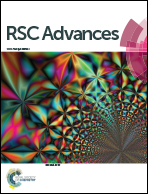Valence and electronic trap states of manganese in SrTiO3-based colossal permittivity barrier layer capacitors
Abstract
In this study, colossal effective permittivity (ε′ ∼ 50 000) dielectrics are attained in Mn and Nb co-doped SrTiO3-based capacitors, and the effective permittivity is explained in terms of an internal barrier layer (IBL) effect. Here, we use a combination of characterization techniques, including scanning transmission electron microscopy (STEM), electron energy loss spectroscopy (EELS), energy dispersive X-ray spectroscopy (EDS), and charge Deep Level Transition Spectroscopy (Q-DLTS) to confirm the presence of interfacial electronic traps in an air co-fired capacitor with Pt internal electrodes. The IBL was developed by an oxidative annealing process, leading to improved dielectric loss and breakdown voltages. The elemental mapping confirms that the dopant has a Mn-rich segregation layer in the grain boundaries and also at the electrode/ceramic interface. The EELS results reveal the valence change of manganese changed from a mixed Mn2+/Mn3+ to a mixed Mn3+/Mn4+ during an annealing process. The valence changes helps to enhance the Schottky barrier height at the grain boundaries, and this is quantified by a Capacitance–Voltage (C–V) analysis. Moreover, Q-DLTS results are presented to show the three electronic traps existing at IBL. All these changes with oxidative annealing are also discussed and related to the electrical and dielectric property trends.


 Please wait while we load your content...
Please wait while we load your content...